I am so excited to share my delightfully spongy rasgulla recipe (also known as rosogolla, roshogollah or rasbari ) with you today. This popular Bengali dessert is beloved across the South Asian diaspora! Soft round dumplings made from chenna (an Indian cottage cheese) and semolina flour are simmered in a cardamom and rosewater scented sugar syrup for a tasty sweet that is simply lovely.
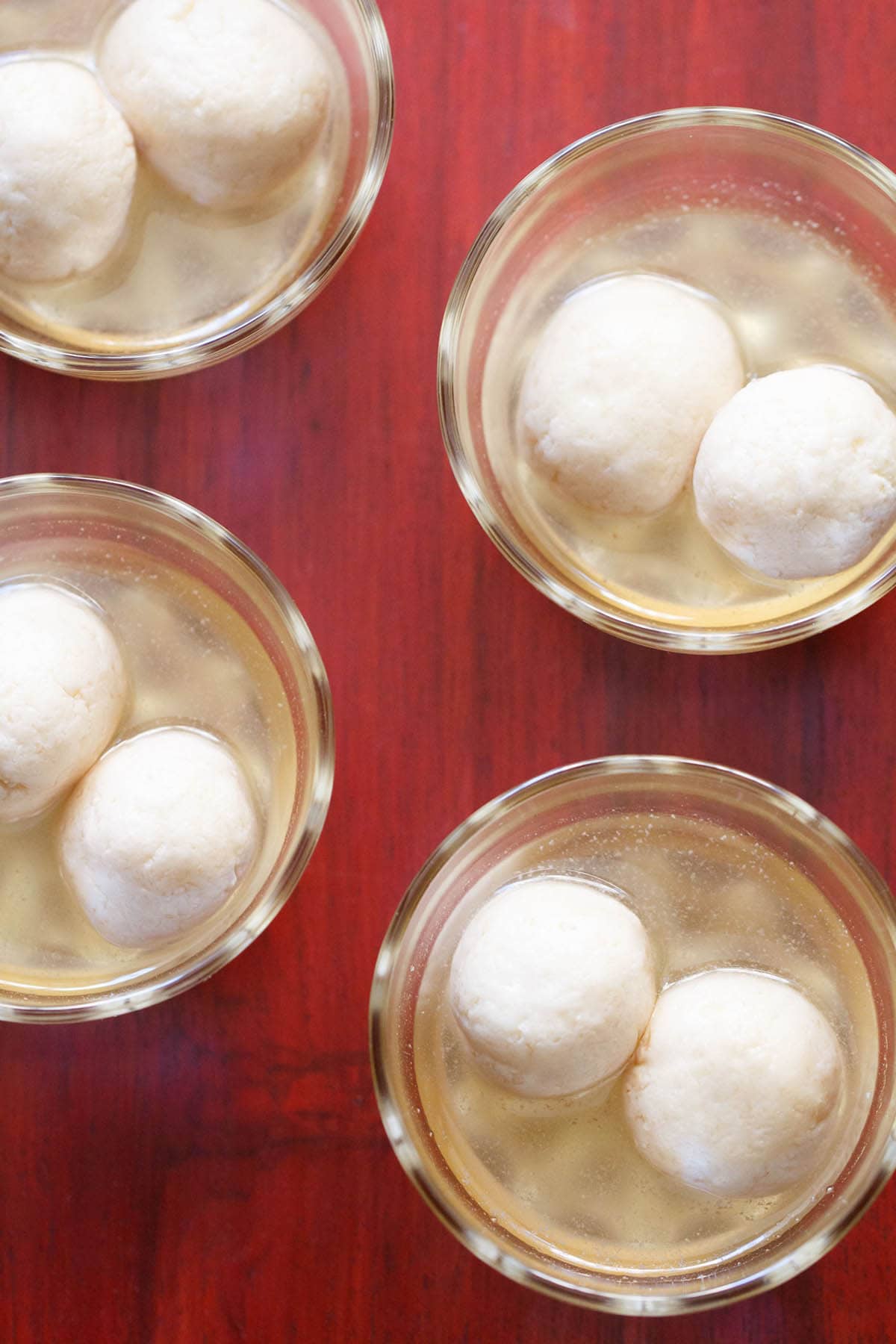
About Rasgulla
While the origin story of this treat is hotly contested in some circles, I know rasgulla to be a famous Bengali sweet made from milk.
To make rasgulla recipe, milk is curdled and drained of whey to make chenna, which is essentially a fresh cottage cheese.
The chenna is then kneaded with some semolina(rava or suji) or all purpose flour (maida). Round balls are made from the kneaded chenna, which are then cooked in sugar syrup.
The final touch is to scent the syrup with either aromatic cardamom or rosewater. The end result of this process is a pot full of sweet, syrupy cheese dumplings that are downright addictive.
About This Recipe
Rasgulla is our favorite Bengali sweet. It is also one of those few recipes for which I have received a shocking amount of requests. Although making rasgulla can be tricky, this post will help you to get it right.
After much trial and error, I have found that this method will result in the juiciest, spongiest dumplings! They’re so soft that they spring right back when you touch them. YUM!
In this rasgulla recipe post, I offer many tips and suggestions wherever possible so that you can easily make this tasty milk dessert at home.
These round white beauties stay good for a week in the refrigerator, so they are an excellent recipe for those of you who like to plan ahead.
Serve them plain as a simple sweet, or make Rasmalai with them. This recipe yields 18 to 20 rasgulla.
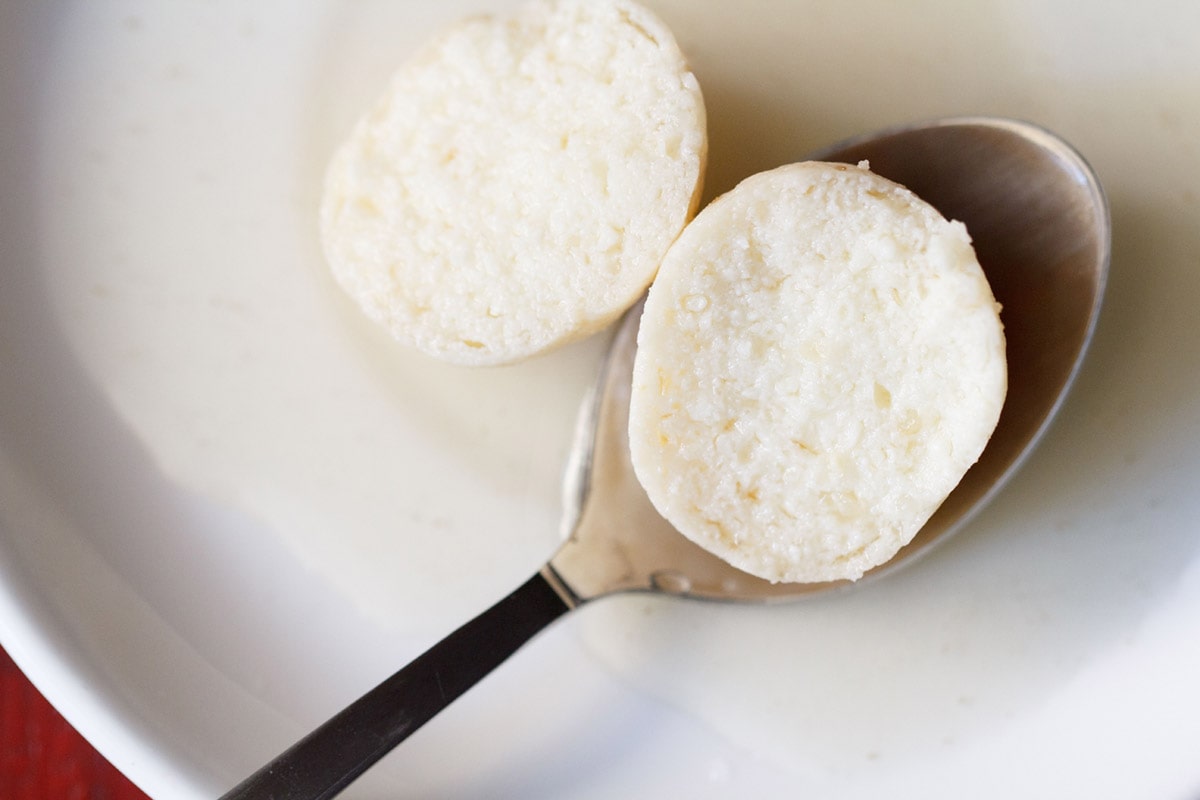
How to Make Rasgulla
While this recipe isn’t particularly difficult, there are quite a few steps involved. I have divided the rasgulla recipe into four parts for ease of reading:
- Making chenna
- Making rasgulla balls
- Preparing sugar syrup
- Cooking rasgulla
On a side note, I kneaded the chenna and cooked the sugar syrup simultaneously to save time. You can opt to prepare the chenna balls first and then make the sugar syrup if you are feeling overwhelmed.
Make Chenna
1. Take 1 litre of whole milk in a pan and bring it to a low boil on a low to medium heat.
Note: I used organic cow’s milk, which does not have much fat. If you use buffalo milk, it has too much of fat and makes for a thick layer of malai/cream floating on top. You have to remove the thick layer of malai before you proceed with the making of chenna.
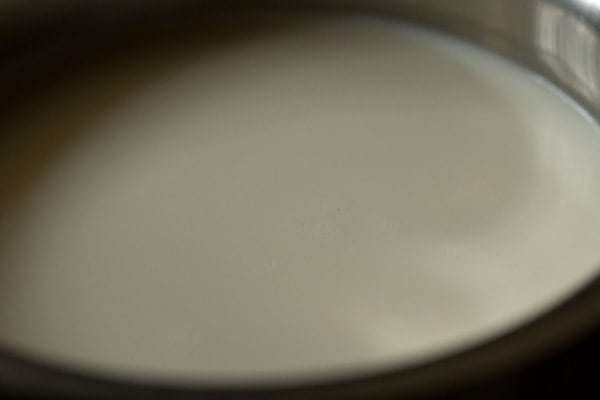
2. While the milk is heating up, line a mesh strainer or colander with a piece of cheese cloth or muslin.
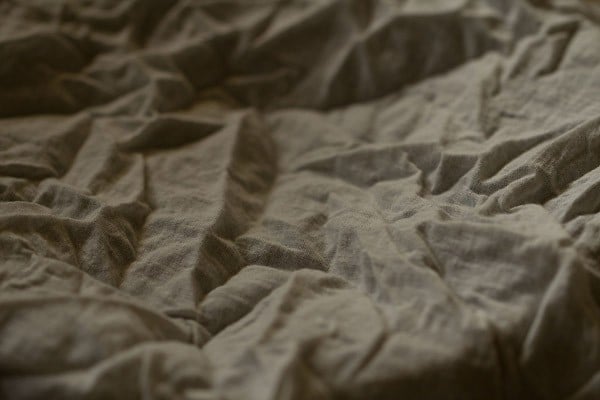
3. Keep stirring the milk at intervals. This will help to prevent froth from forming on top and the base from scorching.
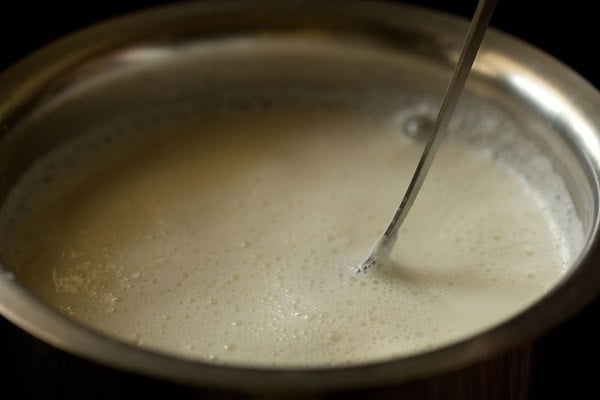
4. When the milk comes to a boil, then reduce the heat to its lowest. Add 1 to 3 tablespoons of lemon juice.
Start with just 1 tablespoon of lemon juice and stir very well. If the milk has not curdled completely, then add more. Keep the lemon juice handy so you can add it as needed.
Note: Depending on the quality of milk, you may need extra acid to get the milk to curdle. Vinegar also can be added instead of lemon juice. Another option is curd/yogurt. Add 4 to 5 tbsp of yogurt (or more if required).
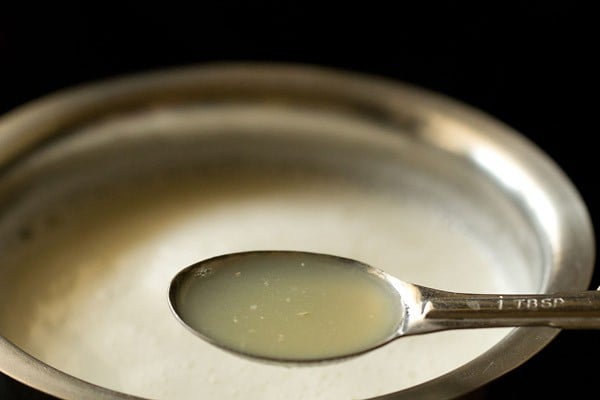
5. As soon as the milk curdles, switch off the heat. The milk should curdle completely and you should see a green watery whey.
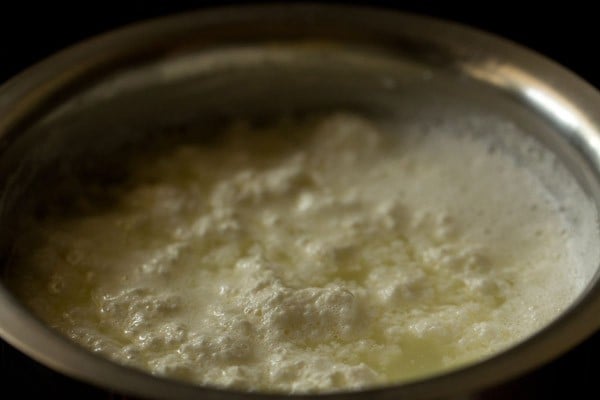
6. Now pour the curdled milk in the cheese cloth/muslin lined strainer or bowl.
Tip: The whey is very nutritious, so don’t discard it! Add it to your chapati dough or in dals or curries.
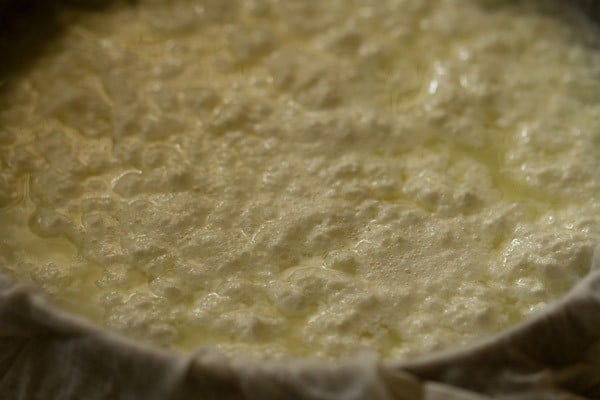
7. Gather the muslin from the sides and rinse the chenna or coagulated milk solids very well in running water.
This brings down the temperature of chenna as well as removes the lemony flavor and tangy taste from the chenna.
Note: If you used yogurt/curd in place of the lemon, you don’t need to rinse the chenna in water.
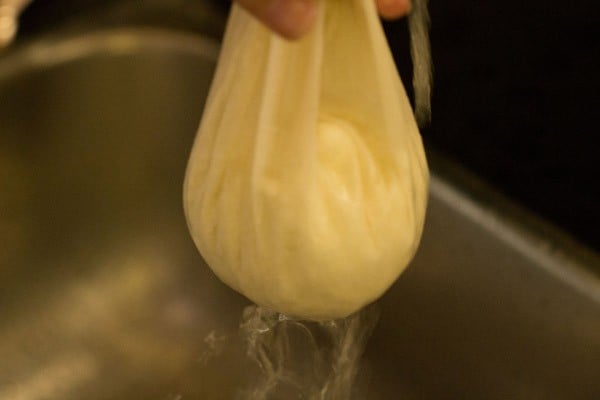
8. Now squeeze the muslin with your hands very well so that excess water is drained from the chenna.
Any excess moisture in the chenna will cause the rasgulla to break when cooking.
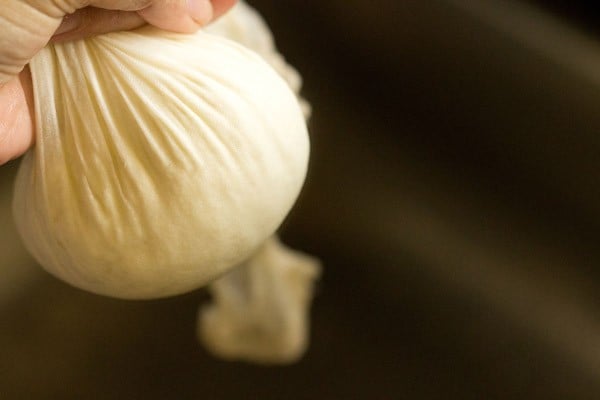
9. Place a heavy weight on the chenna for 7 to 8 minutes, or hang it for about 30 minutes.
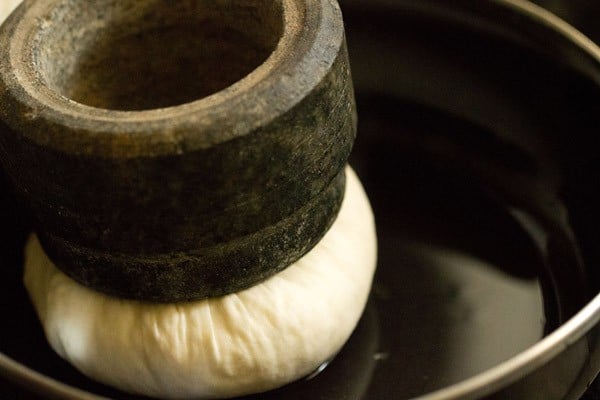
10. After the chenna is thoroughly drained, remove the cheesecloth. It should not have too much moisture nor be too dry. The texture below is just right!
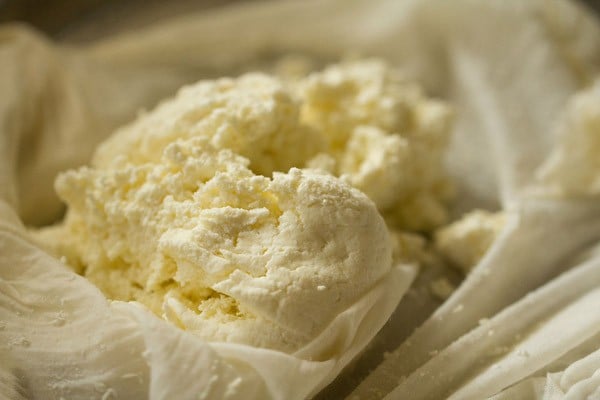
Make Rasgulla Balls
11. Add 1 teaspoon unroasted sooji, rava or semolina. The rava I had was coarse, but a finer one will also work well.
Note: You can substitute all purpose flour/maida to bind the dough. For a gluten-free option, add 1 teaspoon cornstarch instead of semolina or all purpose flour.
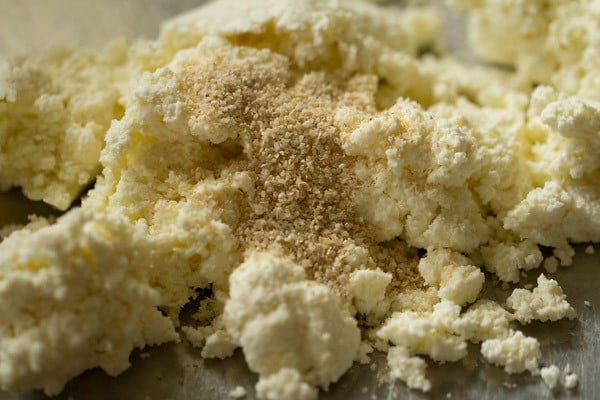
12. First mix the sooji with chenna and then begin to knead.
If you see that the chenna is watery, then you have a bit too much water. You can add some maida (all purpose flour) so that extra moisture is absorbed.
Alternatively, keep a heavy weight on the chenna again so that the extra water or whey gets drained.
If the chenna looks crumbly and dry, then this means that you need some more moisture. To correct this, sprinkle 1 to 2 teaspoons of water while kneading.
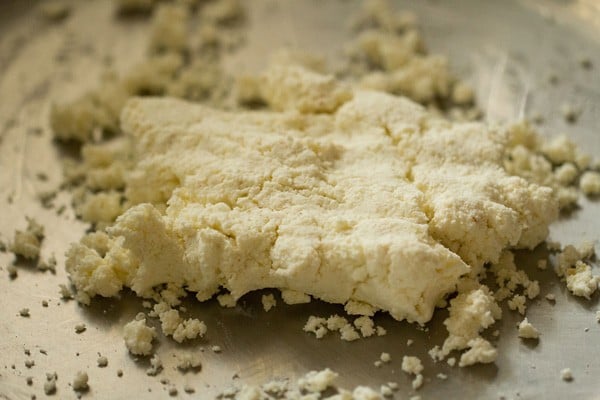
13. With the heels of your palms, mash the chenna and knead. Keep on collecting the chenna from the sides and continue to mash and knead.
This kneading process is very important and also decides the texture of chenna. When you feel your palms becoming a bit greasy, it is time to stop.
Just a bit of greasiness is required. Avoid kneading to an extent where the whole chenna becomes greasy.
I kneaded for about 10 minutes as I have very light hands. Depending on the quality of chenna and the pressure you apply while kneading, you can take more or less time.
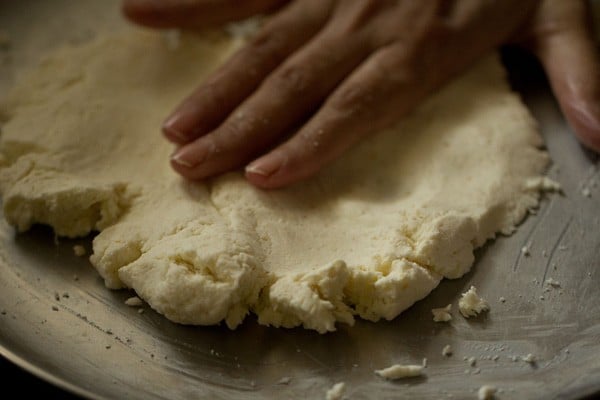
14. Knead to a smooth ball of chenna which should be able to come together without breaking or falling apart.
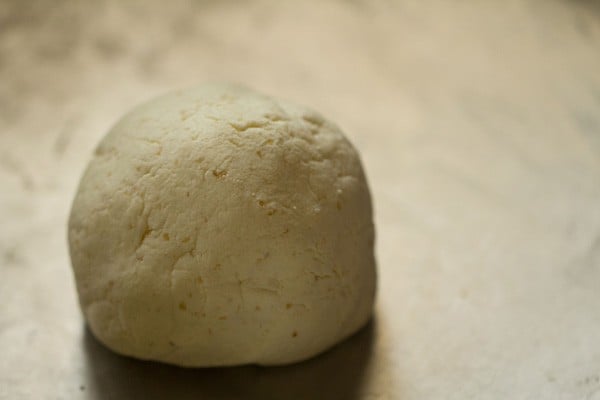
15. A close up photo showing you the texture of the chenna dough.
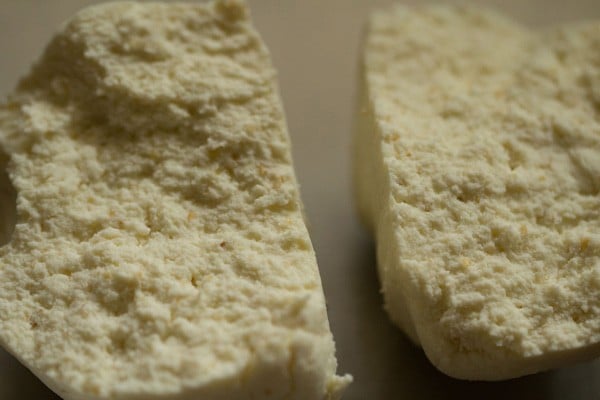
16. Now pinch small portions from the chenna and roll them between your palms to a smooth round ball.
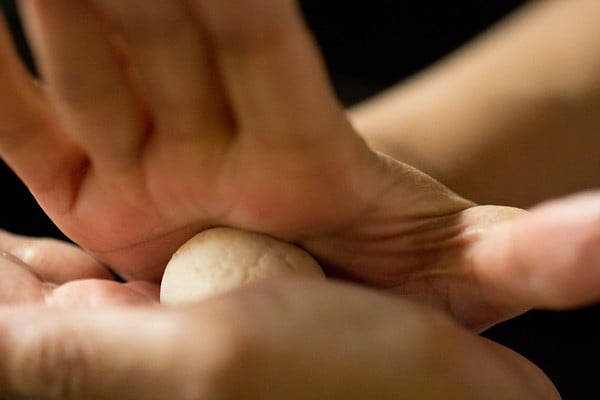
17. Prepare all small balls this way. There will be some fine cracks on the chenna balls. Don’t worry! This is normal.
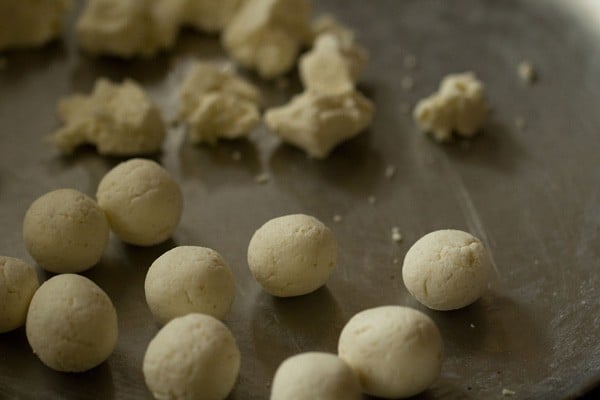
18. Cover all the chenna balls with a moist muslin or kitchen towel and keep aside.
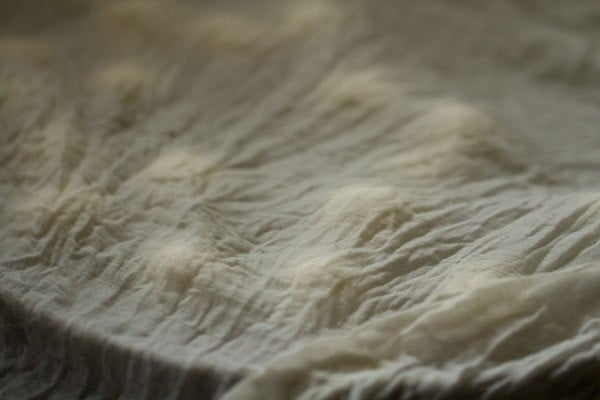
Make Sugar Syrup
19. In a large pot, take 2 cups sugar.
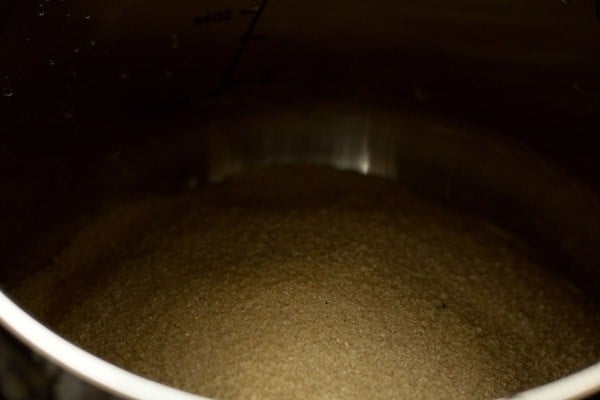
20. Add 4 cups water (1 litre). Be sure to use a large pot or pan so that there is enough space for the rasgulla to cook and increase in size. You can also use a stovetop pressure cooker.
I used a pot measuring 8.5 inches in diameter and 4.5 inches in height, roughly 3.5 litres.
Note: I used organic raw sugar, hence the golden tones to it. White sugar will also work just fine.
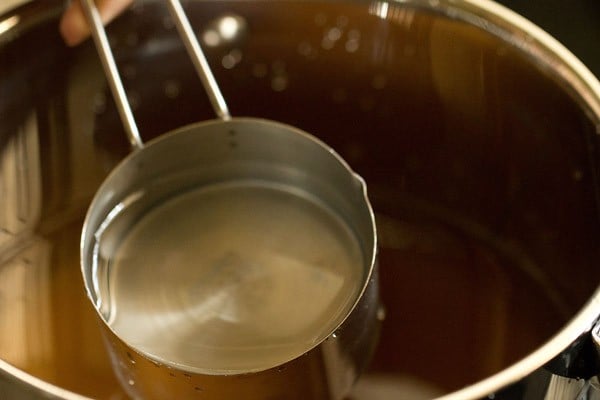
21. Heat the sugar solution on the stovetop over medium heat, stirring so the sugar dissolves. You don’t need to boil the solution.
If there are impurities in the sugar solution, then move to the next step. If no impurities, then move to Step 25.
Note: To save time, I kneaded the chenna and cooked the sugar syrup simultaneously.
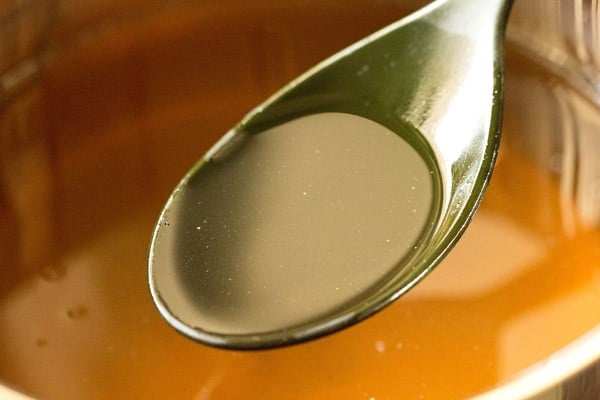
22. Add 1 tablespoon of milk and stir. Adding milk helps in removing impurities.
If there are no impurities, then you don’t need to add milk and may directly proceed to step 25.
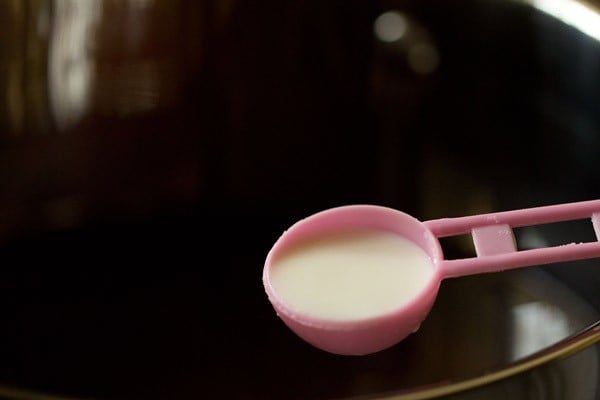
23. Once the sugar solution becomes hot, the impurities begin to float on the top.
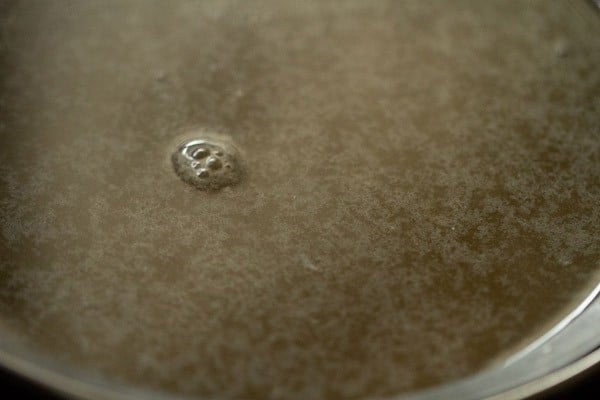
24. You can either remove them with a spoon…
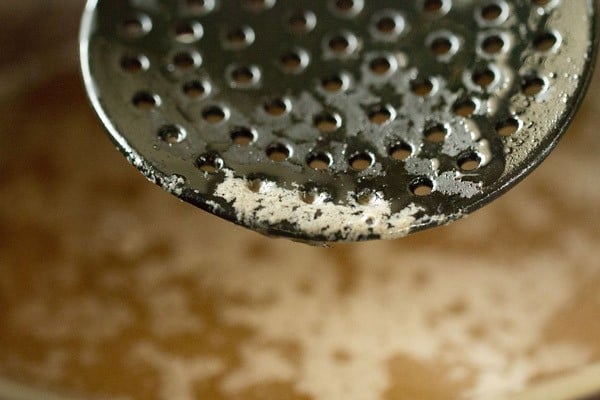
24. Or choose to strain the impurities in a cheese cloth/muslin lined strainer. I prefer this method.
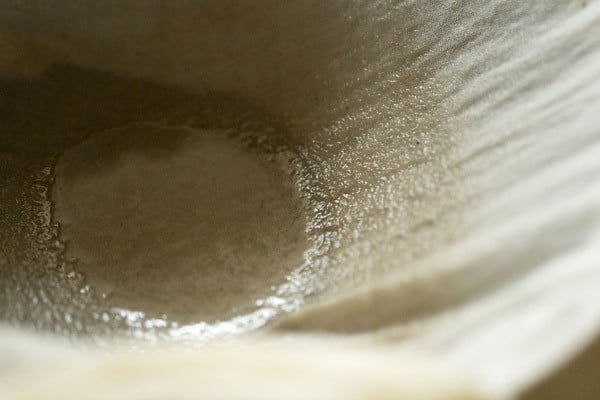
25. Reserve ½ cup of sugar solution to add later while cooking the rasgulla.
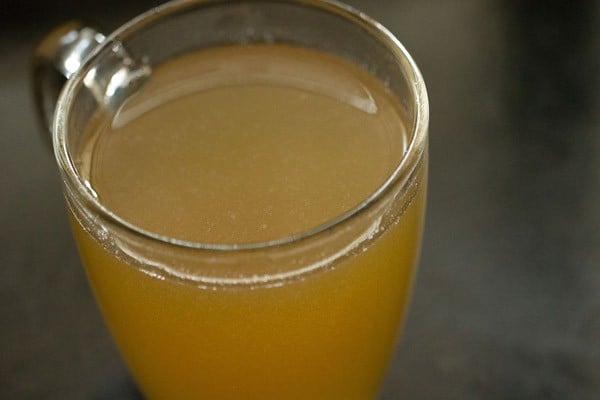
26. Reserve another 1 cup of the filtered sugar solution in a serving bowl.
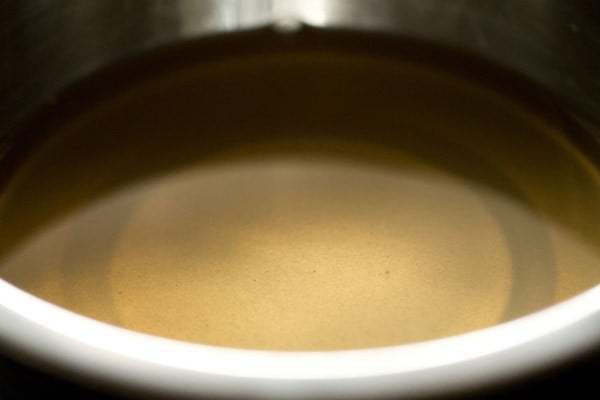
27. Add the rest of the sugar solution (approximately 2.5 cups) back to the same large pot and bring it to a boil on a medium high heat.
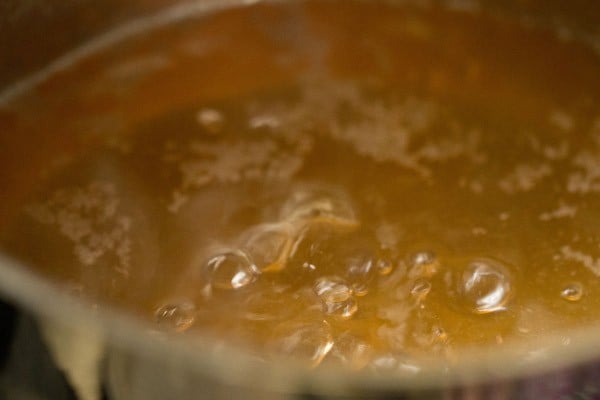
Cook Rasgulla
28. Gently slide the rasgulla balls into the sugar solution.
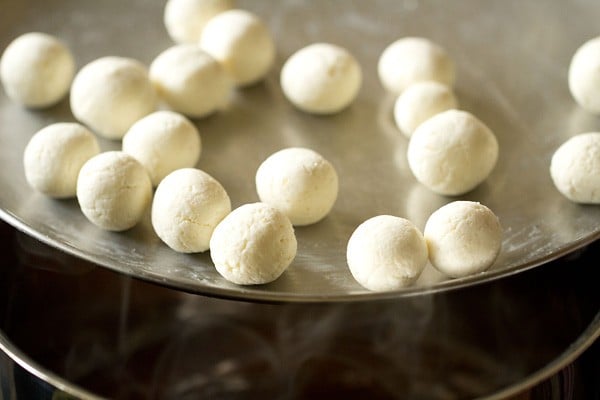
29. Once all the rasgulla have been added to the sugar solution, gently shake the pot. Don’t stir the rasgulla with a spoon.
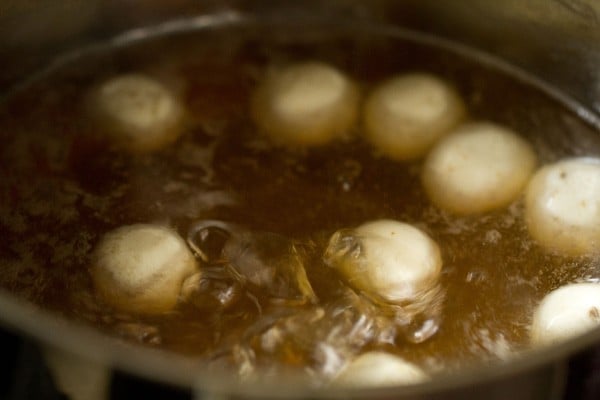
30. Cover immediately with a lid and let them cook. Keep the heat to a medium or medium high.
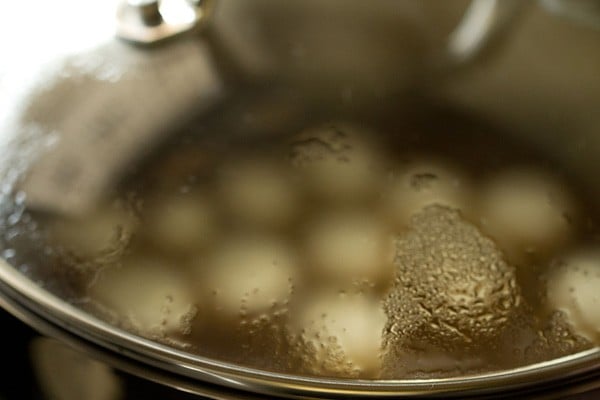
31. After 4 minutes, open the lid and add ¼ cup of the reserved sugar solution. Shake the pot.
Adding the reserved sugar solution ensures that the temperature and consistency of the sugar solution is maintained and the sugar does not cook to thread stage.
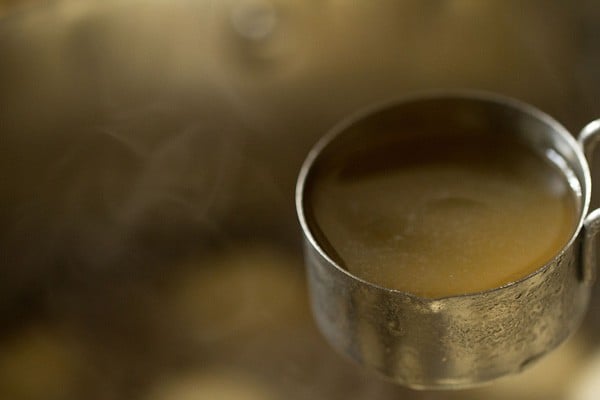
32. Cover again and continue to cook.
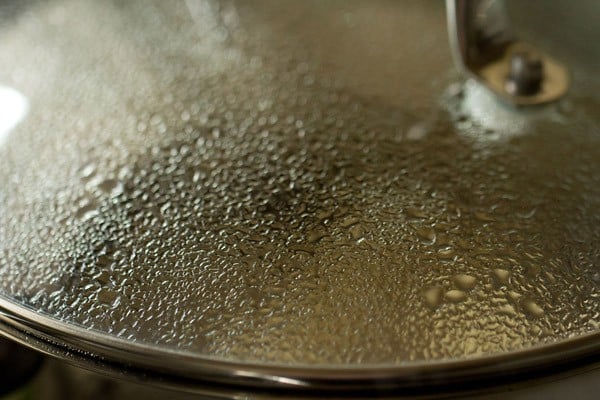
33. After 4 minutes, again add ¼ cup of the reserved sugar solution. Cover and again cook for 2 minutes.
In total, the rasgulla balls cooked for about 10 minutes. After 10 minutes, they had increased in size and were done.
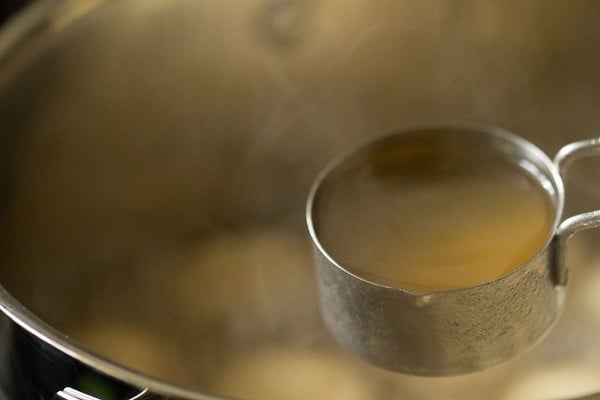
How to Know When Rasgulla Are Done
34. You have to check the doneness while the rasgulla are simmering. Once the rasgulla are cooked through, switch off the heat and keep the pot down.
The time to cook rasgulla will vary depending on the thickness and quality of pot; the size of pot; and the intensity of the heat.
The time range can be somewhere between 7 to 11 minutes. So you can add the ¼ cup sugar syrup after 2 to 3 minutes also instead of 4 minutes.
I used a thick bottomed wide and deep pot, so the cooking time was slightly more for me.
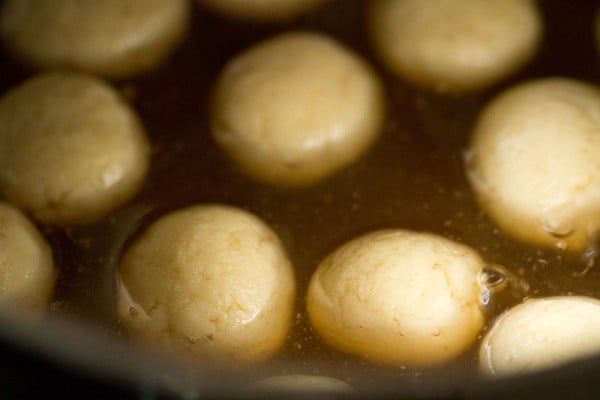
35. There are two ways to check the doneness of rasgulla.
- First method is to place the rasgulla in a bowl or cup of water. If the rasgulla sinks to the bottom and stays there, its cooked.
- Second method is to press a small portion of the rasgulla with your finger. If the pressed portion bounces back to its original shape, its done.
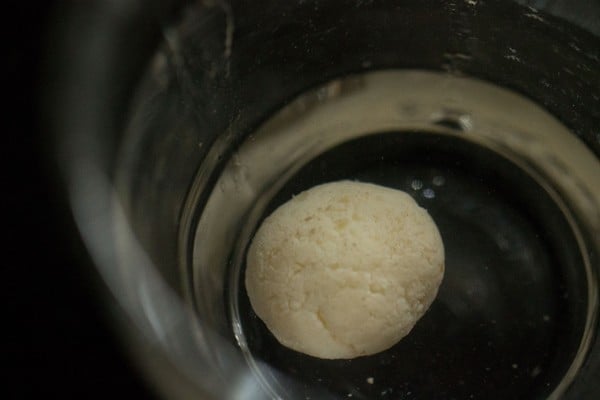
Soaking Rasgulla in Sugar Syrup
36. Once they are cooked, take each rasgulla with a spoon.
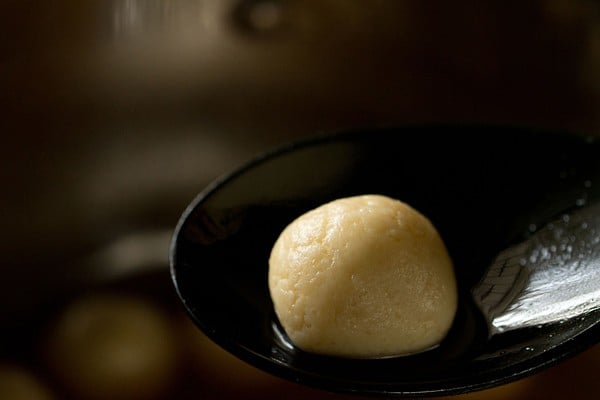
37. Place it in the serving bowl containing the reserved 1 cup of sugar solution. Cover and keep aside.
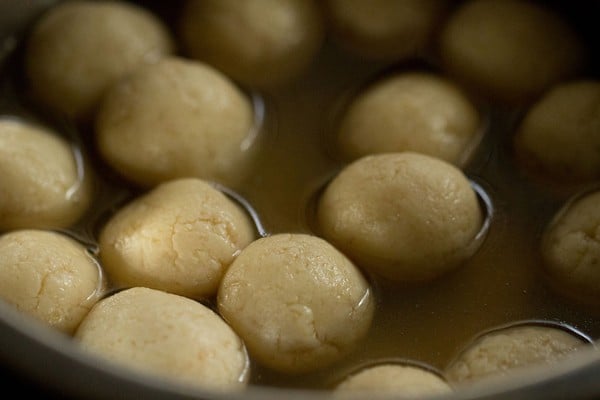
38. Let the sugar solution in which the rasgulla were cooked cool to a warm temperature. Then add this sugar solution to the serving bowl containing the rasgulla.
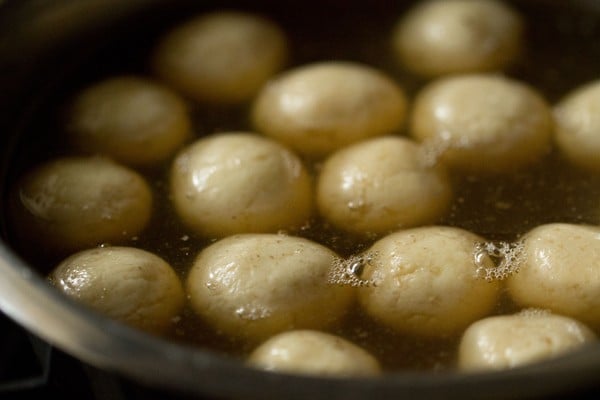
39. Once the whole mixture has cooled down, add 1 to 2 tablespoons of rosewater. Stir gently. Allow them to soak in the syrup for about 30 minutes, so that the flavors infuse the rasgulla.
TIP: Some flavoring has to be added, otherwise you will get a milky taste in the rasgulla. In case the milky taste is there, then you can increase the amount of rosewater or add 1 teaspoon cardamom powder.
NOTE: If you don’t have rose water you can substitute kewra water (pandanus water) or ½ teaspoon cardamom powder. You can even use both rosewater and cardamom powder.
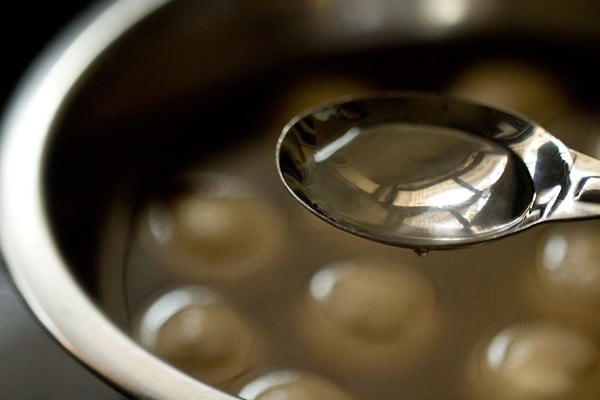
Storage & Serving Suggestions
40. You can serve the rasgulla now or refrigerate them and serve later cold. Keep them covered in an air-tight container.
Rasgulla keeps well for about a week in the refrigerator. Do not keep them at room temperature.
While serving place the required amount of rasgulla in each serving bowl. Pour a few tablespoons of the sugar syrup in the serving bowl.
If you like garnish with some slivered nuts like almonds or pistachios.
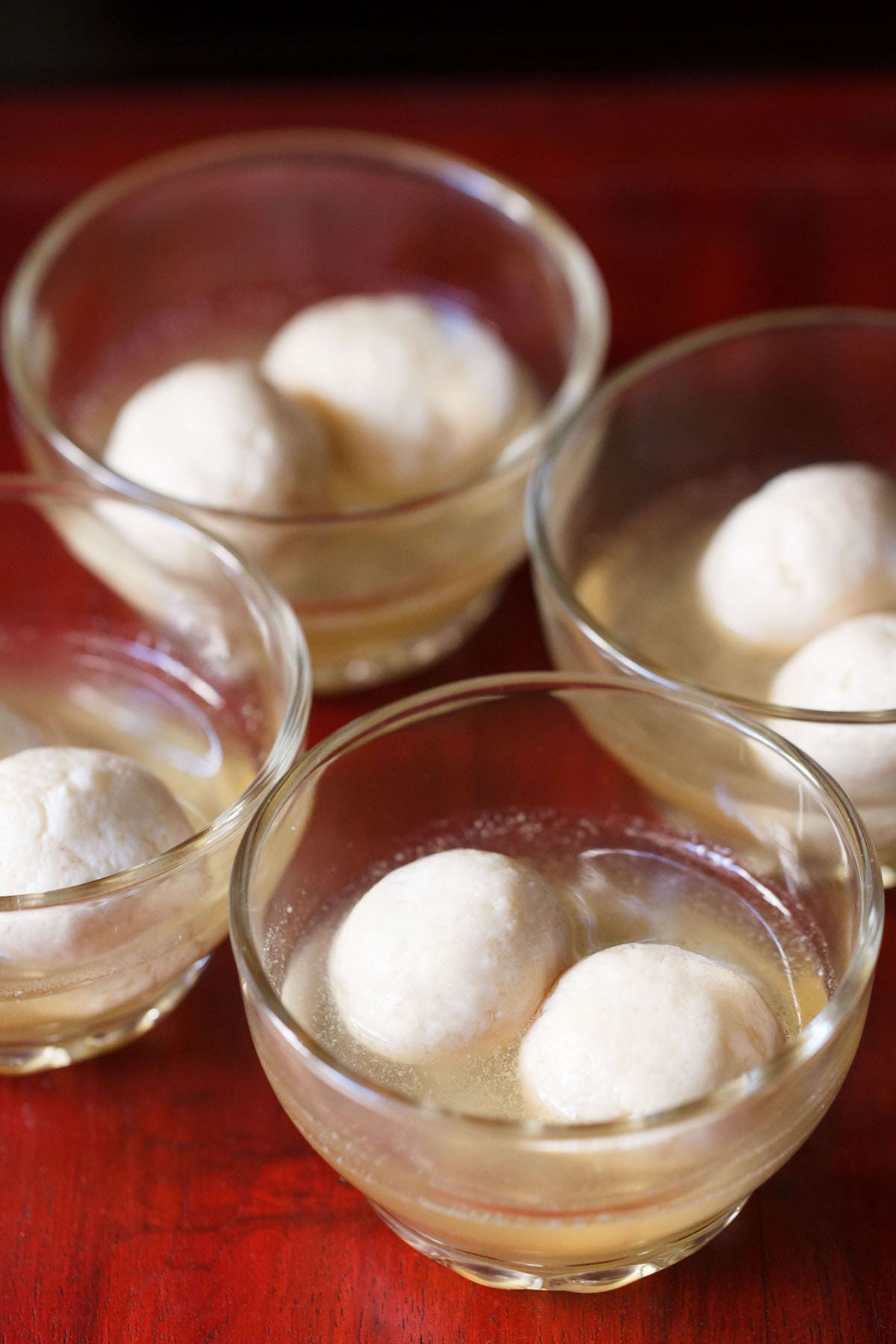
Troubleshooting Tips
1. What should be the quality of milk to make rasgulla recipe?
To make chenna based sweets like rasgulla, always use full cream milk or full fat whole milk. You can use homogenized milk or pasteurized milk.
Do keep in mind that milk should be fresh and must be in its shelf period. Do not make rasgulla with toned milk, skimmed milk or low fat milk.
2. How to check the correct moisture in the chenna?
Rasgulla recipe is made from chenna. Chenna is made from curdling milk and draining the whey. For those of you who are familiar with it, chenna is similar in consistency to ricotta cheese.
The moisture balance is very important in getting the correct texture in your rasgulla. If the chenna has too much water or moisture, then the rasgulla disintegrates or breaks while cooking.
If there is too little moisture in the chenna, then the rasgulla becomes rubbery and dense, and shrinks or flattens after cooking and cooling.
While kneading chenna for the rasgulla recipe, you can easily check the moisture content in it. If you see that the chenna is moist or watery, then this implies that there is too much water.
To rectify, you can add some maida (all purpose flour) so that extra moisture is absorbed. The second method is to keep a heavy weight on the chenna again so that the extra water or whey gets drained.
If the chenna looks crumbly and dry, then this means that there is not enough moisture in it. So to correct this, sprinkle 1 to 2 teaspoons of water while kneading. This will add some moisture in the chenna.
Some moisture in chenna helps in binding and results in soft rasgulla, but note that too much moisture or water in chenna will ruin it.
3. How much time is taken to knead chenna?
Depending on the force and pressure applied by your palms, the timing will vary. Yet there is a test which you can use – when your palms become slightly greasy, the chenna is well kneaded.
Some fat from the chenna is released while kneading it, thus the palms should become slightly greasy when kneading.
When you reach this step, stop kneading chenna and make round balls from it. The chenna should be kneaded to a smooth large ball which should be able to come together without breaking or falling apart.
4. How to check if the rasgulla is cooked?
Depending on the force and pressure applied by your palms, the timing will vary. Yet there is a test which you can use – when your palms become slightly greasy, the chenna is well kneaded.
Some fat from the chenna is released while kneading it, thus the palms should become slightly greasy when kneading.
When you reach this step, stop kneading chenna and make round balls from it. The chenna should be kneaded to a smooth large ball which should be able to come together without breaking or falling apart.
5. What is the consistency of sugar syrup for rasgulla recipe?
Rasgulla is dunked in sugar syrup which is watery like a simple syrup, without any strings of caramel. This thin consistency helps the rasgulla to absorb the sugar syrup and makes it sweet.
FAQs
If the rasgulla balls are overcooked, then they will end up becoming rubbery and dense. You may have also used dry chenna that was crumbly. Next time, try adding 1 to 2 teaspoons of water if the dough looks dry.
Always use a large pan or pot when cooking rasgulla so that all the rasgulla balls can expand during cooking. Also, never stir with a spoon as the rasgulla can break. Another point to be noted is that the rasgulla can get shrunk or flattened if the chenna is dry.
Once the cooked rasgulla cool to room temperature, refrigerate them. Do not keep them at room temperature as they will spoil.
The leftover syrup can be used to make nimbu pani (lemonade). You can also add it to shikanjvi or fruit juices or add to batters while making cakes.
More Bengali Sweets To Try!
Sweets Recipes
Bengali Recipes
Sweets Recipes
Bengali Recipes
Please be sure to rate the recipe in the recipe card or leave a comment below if you have made it. For more vegetarian inspirations, Sign Up for my emails or follow me on Instagram, Youtube, Facebook, Pinterest or Twitter.
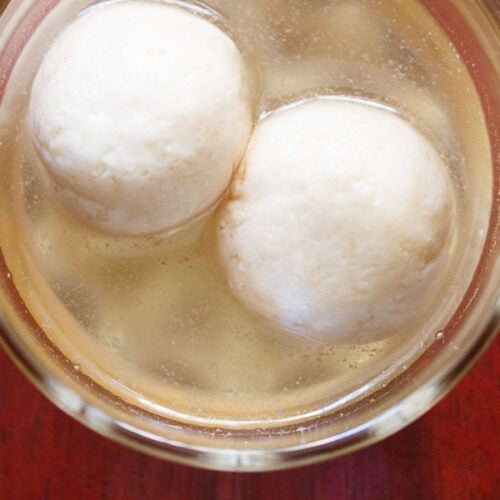
Rasgulla Recipe (Soft & Spongy)
Ingredients
- 1 litre whole milk
- 2 to 3 tablespoons lemon juice or add as required
- 2 cups sugar or raw sugar
- 1 litre water
- 1 tablespoon milk – optional
- 1 teaspoon sooji (rava or cream of wheat) or all purpose flour or cornstarch
- 1 to 2 tablespoon rose water or kewra water or ½ teaspoon cardamom powder
Instructions
Making chenna
- Take whole milk in a pan and keep it to boil on a low to medium heat.
- So when the milk is heating up, line a strainer or bowl with a cheese cloth or muslin.
- Keep on stirring the milk at intervals so that the froth is not formed on top and the base does not get browned or the milk solids get stuck to the bottom.
- When the milk comes to a boil, then reduce the heat to its lowest. Add 1 to 3 tablespoons lemon juice. First add 1 tablespoon lemon juice and stir. If the milk has not curdled completely, then add 1 tablespoon more. Keep the lemon juice handy with you.
- Depending on the quality of milk, you may need to add 1 to 3 tablespoons of lemon juice. Stir after adding the lemon juice. Sometimes I have added 1 tablespoon lemon juice and the milk has curdled and sometimes I needed to add 3 tablespoons too. Vinegar also can be added instead of lemon juice.
- Another option is curd/yogurt. Add 4 to 5 tablespoons of yogurt or more if required. With yogurt you don't need to rinse the chenna in water later.
- As soon as the milk curdles, switch off the heat. The milk should curdle completely with the green watery whey. If the milk does not curdle, then add ½ to 1 tablespoon of lemon juice more.
- Now pour the curdled milk in the cheese cloth/muslin lined strainer or bowl.
- Gather the muslin from the sides and rinse the chenna or coagulated milk very well in running water. This brings down the temperature of chenna as well as removes the lemony flavor and tangy taste from the chenna.
- Now squeeze the muslin with your hands very well, so that excess water is drained from the chenna. Remember there should not be excess water or moisture in the chenna as then the rasgulla will break when cooking.
- Place a heavy weight on the chenna for 7 to 8 minutes. You can also hang the chenna for about 30 minutes.
Making chenna balls
- After 7 to 8 minutes, remove the cheesecloth from the chenna. Note that the chenna should not have too much moisture nor be too dry.
- Add 1 teaspoon sooji or rava or semolina. You can also add all purpose flour (maida). Adding either of them helps to bind the mixture.
- First mix the sooji with chenna and then begin to knead.
- With the heels of your palms mash the chenna and knead. Keep on collecting the chenna from the sides and continue to mash and knead.
- This kneading process is very important and also decides the texture of chenna. When you feel your palms becoming a bit greasy, its time to stop. Just a bit of greasiness is required.
- Avoid kneading to an extent where the whole chenna becomes greasy. I kneaded for about 10 minutes as I have very light hands. So depending on the quality of chenna and the pressure you apply while kneading, you can take more or less time. Note that the chenna should just begin to get greasy.
- Knead to a smooth ball of chenna.
- Now pinch small portions from the chenna and roll them between your palms to a smooth round ball.
- Prepare all small balls this way. Cover all the chenna balls with a moist muslin or kitchen towel and keep aside.
Making sugar syrup
- In a large pan, take 2 cups sugar and 4 cups water.
- You have to use a large pot or pan so that there is enough space for the rasgulla to cook and increase in size. You can also use a stovetop pressure cooker. I used a pot measuring 8.5 inches in diameter and 4.5 in height – a 3.4 litre stainless steel pot.
- Keep this pan on stovetop and heat the sugar solution. Stir so that the sugar dissolves. I kneaded the chenna and cooked the sugar syrup simultaneously. You can also do this way.
- Add 1 tablespoon milk and stir. Adding milk helps in removing impurities. If there are no impurities then you don't need to add milk and directly proceed to step 6.
- Once the sugar solution becomes hot, the impurities begin to float on the top.You can either remove it with a spoon. Or strain the impurities in a cheese cloth/muslin lined strainer.
- Now from the purified sugar solution, reserve ½ cup in a cup or mug. This ½ cup of sugar solution we will be adding to the cooking rasgulla.
- Reserve another 1 cup of the sugar solution in a serving bowl.
Making rasgulla
- The rest of the 2.5 cups of sugar solution you add it back to the same large pot and bring it to a boil on a medium high heat.
- Slid the rasgulla gently into the sugar solution.
- Once all the rasgulla have been added to the sugar solution, shake the pot. Don't stir the rasgulla with a spoon. Just gently shake the pot.
- Cover immediately with a lid and let them cook. Keep the heat to a medium or medium high.
- After 4 minutes, open the lid and add ¼ cup of the reserved sugar solution. Shake the pan. Adding this reserved sugar solution ensures that the temperature and consistency of the sugar solution is maintained and the sugar does not cook to its thread consistencies.
- Cover again and continue to cook.
- After 4 minutes, again add ¼ cup of the reserved sugar solution. Cover and again cook for 2 minutes. I cooked for 10 minutes. The timing will vary depending on the thickness & quality of pan, the depth of the pan and heat intensity.
To check the doneness
- There are two ways. First place the rasgulla in a bowl or cup of water. If the rasgulla sinks to the bottom its cooked.
- Second method is to press a small portion of the rasgulla with your finger. If the pressed portion bounces back to its original shape, its cooked
- Once they are cooked, switch off the heat and keep the pan down on the countertop.
Soaking in sugar syrup
- Now take each rasgulla with a spoon and place it in the bowl containing the 1 cup of sugar solution. Cover and keep aside.
- Let the sugar solution in which the rasgulla were cooked, become warm. Then add this to the serving bowl containing the rasgulla.
- Once the whole mixture has cooled down, add 1 to 2 tablelsoons rose water.
- If you don't have rose water you can also kewra water (pandanus extract) or ½ tsp cardamom powder. Stir gently and allow them to be soaked in the sugar syrup for 30 minutes.
Serving & Storage Suggestions
- You can serve the rasgulla now or refrigerate them and serve later cold or chilled.
- When serving place the required amount of rasgulla in each serving bowl. Pour a few tablespoons of the sugar syrup in each serving bowl. If you prefer garnish rasgulla with some slivered almonds or pistachios.
- Keep them covered with the sugar syrup in an air-tight container. They keeps well for about a week in the refrigerator. Do not store them at room temperature.
Notes
- For a gluten-free option, add cornstarch instead of semolina or all-purpose flour.
- I used organic cow milk which does not have much fat. If you use buffalo milk, it has too much of fat and makes a thick layer of malai/cream floating on top. You have to remove the thick layer of malai, before you proceed with the making of chenna.
- Ensure to use full fat milk or whole milk. You can opt to use homogenized milk or pasteurized milk. Toned milk, skimmed milk or low fat milk won’t work to make this recipe.
- Do keep in mind that milk should be fresh and must be in its shelf period.
- The approximate nutrition info is for 1 Rasgulla.
Nutrition Info (Approximate Values)
Rasgulla recipe from the archives was first published on Jan 2015.
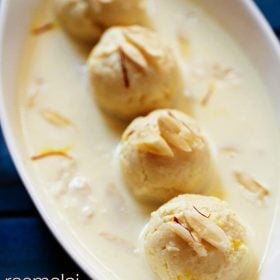
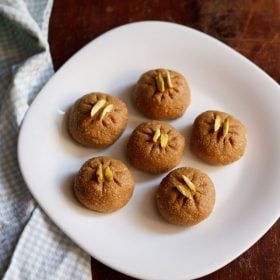
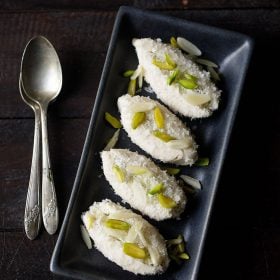
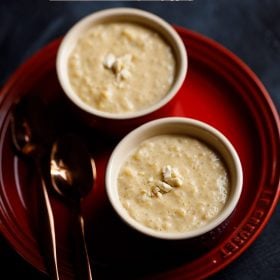
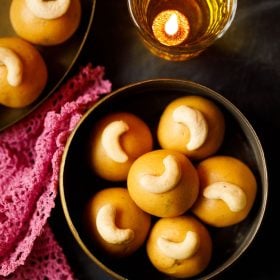
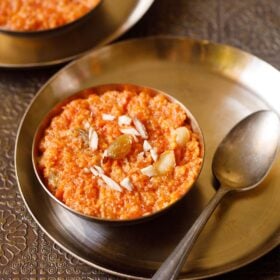
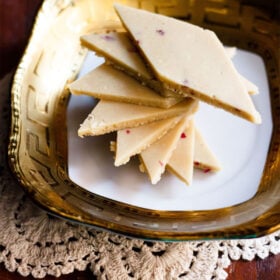
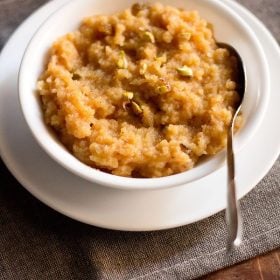








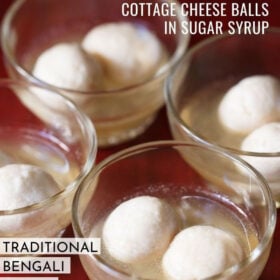
Hi dassana
For the rasgulla recipe can I use 1.5% fat milk available at my region?
Thanking you in advance…
avoid using 1.5% milk. first of all chenna will have a loose texture and rasgulla will disintegrate while cooking.
Can we use pasteurized cow milk.
yes you can.
Hey,
Thanks for amazing and sweet article of Rasgulla Recipe To be honest I never tried this and i’m really excited to make that Hahaha,
Can you please clear my one question here that Is it possible to use persian saffron in it ? If yes then how much please mention the quantity also.
I will be waiting for your reply
Thanks
welcome and thanks. you can add saffron. for persian saffron, you can add 20 to 25 strands in the sugar solution or in the chenna. if adding in chenna, then add saffron strands when you boil the milk. alternatively you can add saffron strands in the kneaded chenna. mix the strands with the kneaded chenna and then form the rasgulla balls.
your recipe is very nice but when i am trying to make ras gulla
every time its break when I make in ball why???/
if there is more moisture in the chenna, then the rasgullas will break. so next time try to keep the weight longer on the chenna so that extra moisture is drained.
My rasgullas had a lemon flavor even though I had washed the cheena twice. Except that all was great.
if you rinse the chenna well, then the lemon juice aroma should not be there. not sure what must have gone wrong.
Hello mam…i really like ur recipes v much..i tried rasgulla recipe..bt they didn’t turn out good..rasgulla were flat and broken…pl tell me what might have gone wrong and what things should be taken care of?
jyoti, if there is more moisture in the chenna mixture then the rasgulla will break. so the water has to be drained well when making chenna. so keep a heavy mortar or pestle on the chenna at least for 7 to 8 minutes before you start shaping rasgullas. when kneading also when you see some fat or greasiness on your palms, then stop kneading and make the rasgulla balls.
Hi Mam I tried today but rasgulla are not spongy it’s like soft or not exact spongy from inside
rimple, if the rasgullas are cooked more then they don’t become spongy or soft. they become hard. this could be the reason that the rasgullas have not turned soft.
Hi! Tried your Rasgulla recipe today. They came out spongy but did not absorb the flavour of sugar syrup nicely. I will try again for sure. I think they were good for a first attempt ????.
All your recipes are just amazing. Cooking was never my cup of tea until I came across Veg Recipes of India! Since then I have tried so many recipes of yours and will keep doing so.
You are too good!
Thanks a lot ????????
Welcome Pooja. Glad to know that you have tried many recipes successfully from the blog. Thanks for sharing this awesome feedback on recipes.
The texture of the rasgulla is nearly smooth on one side but cracked on the other side. What might be wrong? Can you help me out?
fine cracks are fine. large cracks can be due to less moisture or less fat content. also when rolling they have to be rolled well. while kneading a bit of fat should just start releasing and you will fee a bit of greasiness in your palms. at this step you can start making balls. hope this helps.
Thank you sooooo much for this spongy rasgolla recipe. I am a bengalee and know the perfect taste and texture of rasgolla. I tried this last night and it came out perfectly.
Welcome Pradipta. Glad to get a positive comment on rasgulla recipe from someone who knows the real taste and texture of rasgullas.
Hi,I tried to make this and it looked really good while cooking.But as soon as I turned off the stove and transfer the rasgulla in the syrup it flattened out.So no more round.What could be the reason?
for cooking the rasgullas balls, its always better to use a dekchi or a pan which has the same diameter through out and the pan should be large. the cooking is even. also if there is too much of moisture drained out from chenna, the the rasgullas can become flat.
Thanks a lot, u r god u saved me today. How cud u be so pricise. My rasgullas are perfect. Thanks a lot
Welcome Gauri. Thanks for your kind words.
Detailed instructions, very precise!!
Thanks Madhu
I’ve a simple question: Isn’t a good Rasgulla supposed to absorbe a small amount of the sugar syrup it’s dropped in to -just like how a good Gulab Jamun does? My wife says, “No” and I have my own doubt. You’re the expert to settle my dilemma and this is one defeat I can DIGEST with pride! Thanks!
of course the rasgulla has to absorb the sugar syrup. otherwise it won’t be sweet. dilemma settled ????